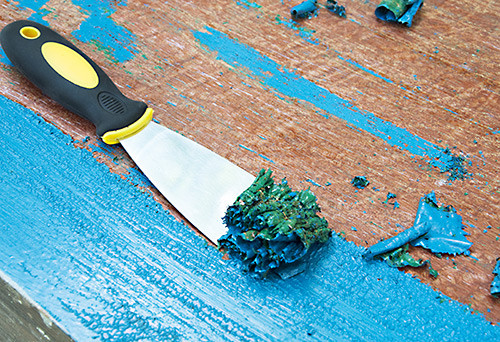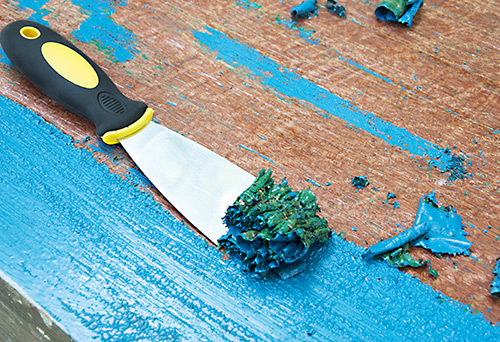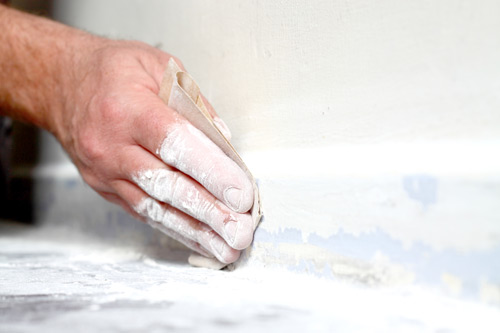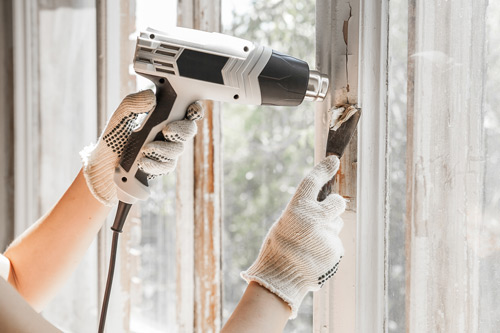
How To Remove Paint From Wood | DIY Tools And Steps
Posted by Lee Watkinson on 22nd Apr 2022
How To Get Paint Off Skirting Boards
If you're planning on redecorating at home, you'll want to make sure you're achieving the best possible finish. In order to do this, you'll want to start with a fresh and clean surface wherever possible.
In this article, we're focusing on our main product - skirtings. We're going to tell you how to get paint off skirting boards.
Tip: these techniques can be used on most woodwork found in the home including architrave, door frames, window boards, flooring and more.
Removing Paint From Wood
It's fair to say that the majority of skirting boards are made out of some kind of wood. In recent years, the most popular is MDF.
Whichever type of wood you're planning to remove paint from, our tips should help you out.
If you live in a period style property with traditional features, you could be revealing intricate designs that have slowly been masked with layer after layer of paint throughout their life.
We're here to show you that removing the paint can be easy, especially with the correct techniques and products to hand.

Check out our 3 best ways to remove paint from skirting boards below:
Sanding The Paint Away
If you're doing metres and metres of paint removal, sanding may not be for you. But it is a really effective technique when it comes to smaller projects. For example, an average bedroom's worth of skirting could be tackled with sanding.
Obviously, the more layers of paint you need to sand through, the tougher and more time consuming this will be.
You also have to bear in mind that sanding wood removes the surface so you'll want to sand as evenly as you can. Avoid sanding the same spot too thin or creating gouges.
Using power tools to sand the paint layers away will help to give you an even finish and even pressure is applied over a larger surface.
We advise you to take your time with this method until you get a feel for it (when hand sanding or using power tools).

Heating The Surface
If you're looking to remove the paint as quickly as possible, heat is the way to go. Electric hot air guns are readily available from local DIY merchants so it's easy to get your hands on one.
You will have to be careful not to scorch the wood if using this method. However, this is less of an issue if you're planning on repainting the skirting boards once the old paint is removed.
Another thing to bear in mind is that a heat gun can not be used to remove varnish. Varnish has a tendency to turn glue like (think PVA) when heat is applied to it so only use a heat gun as a paint remover.

Stripping Paint With Chemicals
More often than not, skirting boards have intricate designs and hard to reach areas.
Using a paint stripper is one of the most popular methods for paint removal on skirting boards. This is because they're really easy to use and can be found cheaply in most DIY stores.
When purchasing a stripper, make sure it's one specifically made for paint (some are used for varnishes and other finishes).
You'll be able to find various quantities depending on the amount of number of paint that need to be removed.
Tools & Protection Required For Removing Paint
Now we're going to let you know what our recommendations are when using the above methods to remove paint from your skirtings.
These will benefit you by making easy work of the task at hand and keeping you safe too.
Protection
No matter which method you choose, make sure you've got the correct protective equipment and take extra precautions to prevent any mishaps.
Testing For Lead In The Paint
Before you try and remove any paint from anything, you must check whether the paint contains lead.
Up until 1960, lead paint was used on a variety of surfaces within homes. If you know that the previous decorating could predate this, you'll need to do a lead test.
Regardless, we'd advise that this test is carried out before trying to remove old paint.
Leas tests can be purchased from most DIY stores (and websites too) fairly cheaply.
This test is extremely important if you're going to be sanding the paint off as this creates a lot of dust. Inhaling this dust is extremely hazardous to your health, particularly for pregnant women and young children.
Protective Clothing
When sanding, dust is going to be circulating around with the air you breathe. To prevent fine particles from entering your lungs, you'll want a properly fitted dust mask.
It can also affect your eyes and skin so using protective glasses and wearing overalls (or long sleeved t-shirt) can help to prevent any irritation.
All of the above will help if using heat to remove the paint from the skirtings too. Not only is it the heat that the gun can produce that could potentially be problematic, but the paint is being heated up too which adds another level of risk.
On top of the above, if working with a chemical stripper you should throw some high quality gloves into the mix to prevent any liquid getting onto your skin.

Room Ventilation
You should at least be working in a room where you can leave doors and windows open to help ventilate the area.
This will help to keep fresh air coming into the room and keep those nasty fumes at bay, especially when using heat or chemical strippers.
Sanding should be done outside wherever possible. In our case, the skirting boards are attached to walls inside your home so that's just not possible.
Ensuring the windows are open as far as possible in this scenario is a given. If using a power sander, it is advised that you get an attachment that can be used to collect the dust as it is created.
Not only will this help to keep you safe, it'll save time cleaning up excess dust too.
Use Dichloromethane (Methylene Chloride) Free Stripper
When choosing a paint stripper, make sure it is free of the above chemical.
Some professionals will choose to use this chemical as it is fast acting but the average DIY-er should steer clear.
Even small levels of exposure can be extremely bad for your health - it's a really nasty chemical.
Tools Required
It's always best to invest in the best tools available. Not only are they more likely to last, but you can achieve a high level finish too.
Obviously you don't need to go overboard if you're only removing paint from a small area. Base your budget on the amount of work you foresee yourself undertaking.
Sandpaper / Electric Sander
Whether you're sanding by hand or using power tools, there's a variety on the market to choose from.
Electric sanders are available with a multitude of attachments so make sure you do your research and get the one most appropriate for the surface to be sanded.
It's best to get a variety of coarseness of sandpapers so you can achieve a smooth finish.
Heat Gun
If you're planning to remove the paint with heat, a heat gun is the way to go.
Generally, they'll have at least a couple of heat settings and an adjustable airflow.
When using it, remember not to leave it in one place for too long - the trick is to keep it moving over small areas. Ensure that you keep it at a constant distance from the skirting too.
If you have a piece of scrap wood to hand, we'd advise practising on this to get a feel for the gun and heat it produces.
As you're applying heat to the small area using a back and forth motion, you're looking for the paint to start bubbling and wrinkle up. This means it's ready to be scraped off.
When attempting to scrape the paint off, if it feels sticky and doesn't easily peel off you'll want to apply some more heat to the area and try again.
Scrapers
One scraper should do the trick for the flat section of the skirting below the design.
When it comes to tackling the profiled area, you'll more than likely need a variety of sizes in order to get into any nooks and crannies - especially if you have a traditional or decorative design.
Paint Stripper
When choosing a stripper, make sure it's free of the chemical mentioned a little earlier in the article and ensure it's a stripper that removes paint.
Re-finish Your Skirting Boards
If you've chosen your ideal method of paint removal thanks to our handy guide, you can start removing the paint!
Once you're back to a clean, paint free surface, you're ready to apply your new finish to the skirting boards.
It just so happens we have a post about painting skirting boards so be sure to check that out if you need some advice to achieve a truly professional finish.

Lee Watkinson
Digital Marketing Director at Skirting World with 10 years of experience in Home Interiors & Manufacturing.
